
A Journey Through My Past
Below is my thesis statement I wrote while attending graduate school at Houston Baptist University. I remember hanging in the balance the few weeks before graduation. I remember the immense feeling of gratitude for the experiences the MFA program provided and for the people I came to love and admire that guided me and challenged me to reach greater potential. Their influence has had a drastic impact on not only who I am as a person, but has done much to shape my goals and aspirations for the future. It felt so good to look forward to the next chapter of my extraordinary story.
My best friend growing up was my sister Stacey. She was only 22 months older, so when we weren't annoying one another, we behaved like friends - spending school nights and weekends together, playing video games or watching video cassettes, shooting basketball in the driveway and, once Stacey could drive, riding around with no real destination or purpose in mind. Her first car, and the one I remember most vividly, was a four-door, light brown colored Honda Accord with tan seats and a cd player I would feed, flipping through the catalog of cds while Stacey steered us along unlined country roads. She loved rap music - and I loved what Stacey loved because deep down I thought she was so cool. She dated the local church's pastor's son, cussed, played football with boys, her three-point shot was true, and she could beat video games I could not. She introduced me to Snoop Dogg, Tupac, Salt-N-Pepa, Notorious B.I.G., TLC. Music that in no way resembled our southern Texan existence, which was isolated both geographically and culturally.
I remember my parents once asking what I wanted to be when I grew up. I couldn’t have been older than 11 or 12 at the time because I was in the sixth grade when I won first place for my cowboy painting in the local rodeo art exhibit. After I won I felt lucky, I felt somewhat chosen and there was a huge feeling that life had somehow just begun. My mother often took me to the public library and bought me home decor and teen magazines at the Walmart. My mind was always working creatively, conjuring up stories about make-believe characters or fantasizing about my future as I tore pages from magazines and pasted scenes into one of my sketch books. The one small place of enchantment I turned to was in the space of my childhood living room floor where I meticulously cut and pasted strips of paper. It was there that my fascination with collage began. I told my parents I wanted to be an artist. That’s not a job, they said. How could I argue? No one I knew, other than my great aunt Nina, who painted quintessential floral arrangements, made art, and definitely not as a means to garner a sustainable income. The music I listened to, the books I read, the movies I watched, none of them sprung from the clay beneath my feet. Back then, I saw little worth in the South and, as a result, in myself. I only wanted out. Since I couldn’t leave, the next best thing was singing along with rap music, strapped in the front seat of my sister’s car with an ice-cold Mountain Dew gripped between my tan legs, imagining a future entirely unlike my present.

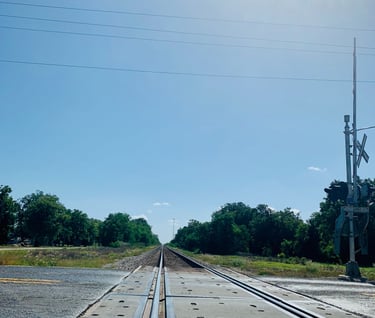


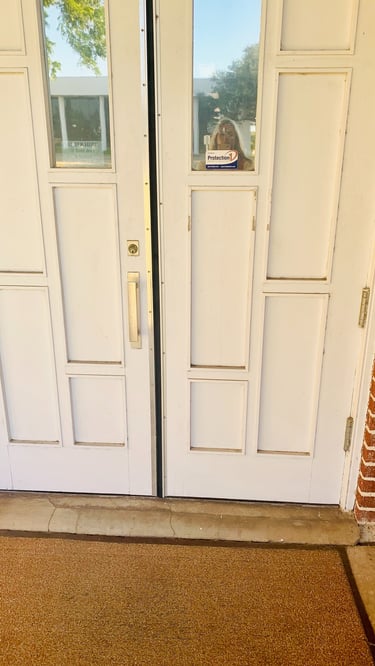




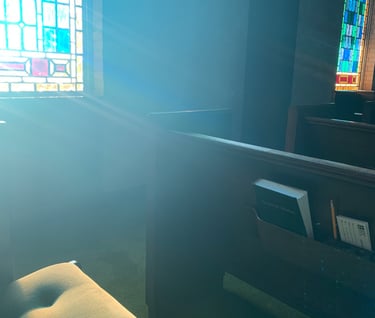
I did not immediately take up the paintbrush. It wasn’t until after my undergraduate studies in studio arts at Sam Houston State University, during a trip to the Metropolitan Museum of Art in NYC, when I saw Robert Rauschenberg’s combine paintings for the first time that I finally granted myself enough courage to step onto the path of actually becoming an artist, not just as an acknowledgment on my diploma but in my heart. Rauschenberg’s paintings were revolutionary. His life and work have been shaped by the values and experiences deeply rooted in his Texas childhood. The southern accents in his work are easily recognized by other southerners. The homely objects such as screen doors, tires, buckets, wooden ladders, old straight chairs, the goats and chickens, tell the story of his beginnings. Seeing Rauschenberg’s paintings that day in NYC reminded me why his work mattered to a young woman who, for a time, loathed the place she came from and resisted its influence. Rauschenberg’s works of art have since become my way-markers, the points on the landscape that I return to for orientation.
Though I didn’t know it at the time, I realize now that Rauschenberg taught me to understand the power of spontaneity and to trust my senses leading me into the realm of intuition. It was because of my sincere suspicion that I found myself sitting alone at a picnic table in my elementary school playground, one hot August day, gazing at the twilight noisy with crickets and frogs. Before I started my graduate studies at Houston Baptist University I decided to go back to my hometown, a place I hadn’t visited in over a decade. Stopping by particularly nostalgic places of my childhood, I sat with my journal and pen at hand and I began to disentangle my past in an attempt to comprehend my present. This was my attempt to feel less haunted by the inescapable question — How alive am I willing to be?
As I entered town I felt an alluring pull toward the street where my childhood home still stood thirty years later. Driving down the curb-less side streets, I was already in a nostalgic dream-like state. Pulling up to the house my mind flooded with piles of distant memories rushing back all at once. I sat in my car parked across the street studying the house for a while, trying to work up the courage to knock on the door and ask if I could take a peek inside. As I sat I noticed that someone had trimmed the old, jaggedly sharp evergreen with the tiny, rock-hard berries on it, which was always the best spot for hide and seek and planted in the perfect ground for making mud pies. I remembered the needles jabbing my forearms and dirt sticking to my elbows when I was down there at dusk, and I remembered it was worth it. It was time to make my move. I gingerly walked across the street and up to the front door and I wondered: Do they still leave the Christmas lights on until February? Do the kids dunk on the basketball net off the hood of the car? Oil stains from dad’s truck still dot the driveway. I saw a new glass door had replaced the rusty screen one that always slammed and had that thin sliding metal lock that never lined up properly. Unfortunately, my excitement was short-lived, as the new home owner answered the door and revealed that he was renovating the place, and had ripped everything out. While I hadn’t expected to see the same ’90s furniture and decor, I wasn’t prepared to see my home stripped bare. We made our way to my bedroom, where I used to cover the walls with posters of heartthrobs like Mark-Paul Gosselaar, Brian Austin Green and Jared Leto. But now, there was no evidence that I’d ever been there at all. I had one last hope: I headed to the closet. Inside, in a spot where you would have to know to look, I found it: I Love Travis. This phrase was written by a lovesick pre-teen-me back in 1994. By now, of course, Travis was long gone and forgotten. But seeing those three words filled me with a weird feeling that was both exhilarating and devastating, tinged with loss and hope all at once. It’s hard to capture this experience in words. But the closest I can say is that in an instant, this strange, bare, empty house felt like home. My home.
The two house assemblages, Goodness Gracious and Momma are a reflection of my visit to my childhood hometown when I reconnected with the innocence and the positiveness of a childhood gone by. My grandmother’s embroidery art, the watercolor painting of the neighborhood tree my friends and I used as base during freeze tag, the pre-school desk chair, the sock monkey are all totems represented in my assemblages that commemorate important people and events of my life. I have always felt that the best security for civilization is the dwelling, and that the improvement of mankind is inspired by, more than anything else, a properly appointed and becoming dwelling. Such dwellings are the nursery of all domestic virtues, and without a becoming home the exercise of those virtues is impossible. Like Rauschenberg, I grew up in a place where love gets shown in many different ways. My neighbor passes along a certain book, my father fills my beater car with a quart of oil in the morning before I wake up and he heads to work, my mother tells me to pray that my sister does well on an exam. They say to love someone else you must first learn how to accept and love yourself. That same August day, as I was sitting in the stands of my high school football stadium overlooking Cobra Field I was searching for that love and acceptance. A stew of country smells filled the air and clouds were latched in the unending sky as I wrote an entry in my journal:
There’s a sunrise and sunset in every day and you can choose to be there for it; you can put yourself in the way of beauty. My life, like all lives, mysterious, irrevocable and sacred. So very belonging. How wild it was to let it be. After I lost myself in the wilderness of my grief I found my own way out of the woods. I didn’t know where I was going until I got there. I was too timid to go into the dark again because it was no longer familiar.



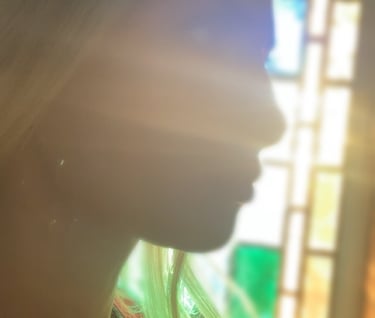
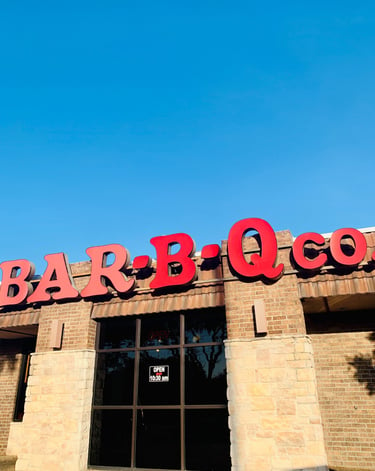


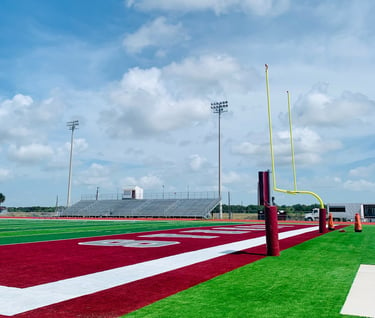
The Difference Now is a meditation on this journal entry. Creating it was my attempt to remember my oneness. To juxtapose my past with my present and to be less concerned about the actual dynamics of creating for a living than I am about what my experience of those dynamics say about me as a human being. To treat my life like the work of art it is.
My last stop was at a locally owned Bar-B-Q restaurant that I worked at in high school. I have dreams about this Bar-B-Q. Sitting in the brown vinyl booth I probably wiped down thousands of times as a teenager, with a plate of goodness before me, I savored every bite. Had I not been so full of meat and wine, I might’ve floated on up to heaven right then. I had a good buzz by the time I made my way back to Houston. If you’ve never lived in a rural place, you may not understand the pleasure of puttering along an empty two-lane in such a gently inebriated state. I thought about calling my sister Stacey, but it was late and she and I had grown apart. Rauschenberg told an audience in Japan that “the function of art is to make you look somewhere else — like into your own life — and see the secrets that are in the shadows, or in the way the light falls somewhere.” Our lives should be treated not as something to be endured, but as purposeful crafted artwork. Art is not apart. It is a continuum within which all participate. It is impossible to separate the experience of being human from the intrinsic need to find expression. To face the blank canvas of our lives and understand — and celebrate — the fact that there are so many possibilities.
